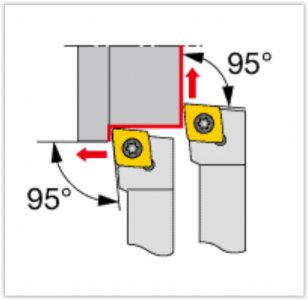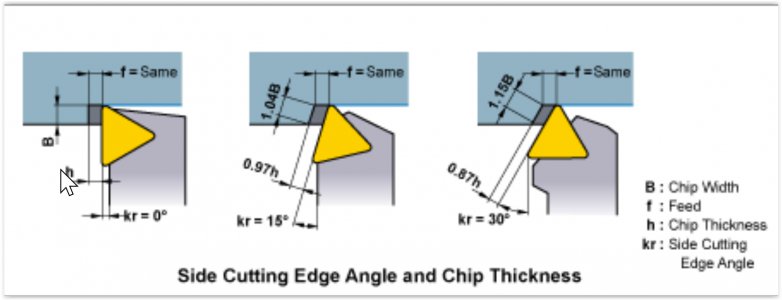- Joined
- Aug 5, 2018
- Messages
- 261
Happy new year to everyone,
I watch a lot of machining videos and most authors of lathe videos at some point stress how important it is to have your qc tool post exactly perpendicular to the centerline of the spindle before doing various operations like parting. Then, the first thing I see them do is face off the end of whatever they're going to turn. Typically, they use a right hand carbide insert tool or HSS but leave the qc tp at it's initial setting and they get a beautiful finish.
A righthand carbide insert tool used for facing has one of it's cutting edges perpendicular to the finished surface and when I follow this method, I get chatter. So, I check the obvious things; insert in good shape, tool extended too far, everything secure and tight, compound not centered over cross slide, etc.
When I use HSS, I grind the usual clearances, front, top and side and then radius the point and still I get chatter, some times.
Am I missing something or doing something wrong?
I watch a lot of machining videos and most authors of lathe videos at some point stress how important it is to have your qc tool post exactly perpendicular to the centerline of the spindle before doing various operations like parting. Then, the first thing I see them do is face off the end of whatever they're going to turn. Typically, they use a right hand carbide insert tool or HSS but leave the qc tp at it's initial setting and they get a beautiful finish.
A righthand carbide insert tool used for facing has one of it's cutting edges perpendicular to the finished surface and when I follow this method, I get chatter. So, I check the obvious things; insert in good shape, tool extended too far, everything secure and tight, compound not centered over cross slide, etc.
When I use HSS, I grind the usual clearances, front, top and side and then radius the point and still I get chatter, some times.
Am I missing something or doing something wrong?



